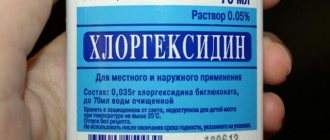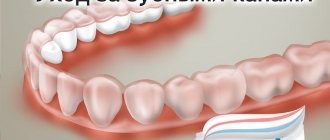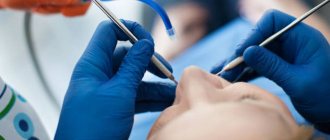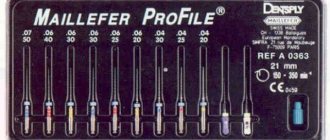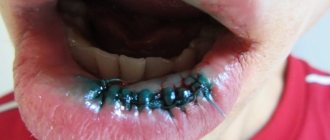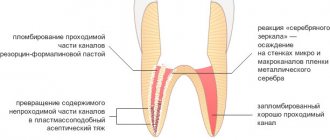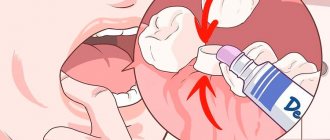Where is Chlorhexidine used?
The pharmaceutical product is used for the treatment and prevention of diseases caused by microorganisms sensitive to Chlorhexidine.
Depending on the concentration of the substance, the medicine can be used in the treatment of various pathologies.
After operations, in order to prevent infectious pathologies, doctors resort to using a pharmaceutical solution.
Chlorhexidine is often used for dental purposes for the treatment of dentures. In some cases, medication is used to treat periodontitis, stomatitis, and they are used to rinse the gums.
The medicine is used in:
- Urology
- Gynecology
- Surgery
What is the difference between Chlorhexidine and hydrogen peroxide
In Chlorhexidine, the starting substance is a secondary dichlorine-containing biguanide, a white crystalline powder.
The chlorhexidine compound is stable.
Mainly used in medicine, very widely in dentistry.
The most frequently studied drug, more than 3,000 scientific publications are devoted to it. Available in the form of creams, gels, ointments, tablets, suppositories and solutions.
The concentration of the aqueous solution ranges from 0.05 to 0.2%.
The main difference between Chlorhexidine and hydrogen peroxide is its ability to suppress the development and reproduction of bacteria, accelerating wound healing.
Peroxide, on the other hand, is unstable. The starting material is the simplest peroxide. It is sometimes called hydrogen peroxide. It does not have bacteriostatic properties; during antiseptic treatment it damages surrounding healthy cells, slowing down wound healing. This is a liquid with a metallic taste, highly soluble in water, ether or alcohol:
- limited use in medicine and dentistry;
- Available only in the form of an aqueous solution;
- the concentration of the drug sold by pharmacies is 3%;
- helps stop bleeding from cuts;
- may cause burns to mucous membranes.
Hydrogen peroxide and Chlorhexidine, the difference between them:
- Chlorhexidine inhibits the development of caries;
- in endodontics, dental canals are washed with Chlorhexidine;
- in the postoperative period, used for oral hygiene;
- removable dentures are kept in Chlorhexidine solution;
- it is used to treat ENT diseases;
- a toothpaste containing Chlorhexidine is produced;
- used for the prevention of sexually transmitted infections;
- included in veterinary products;
- used in medicines in the form of digluconate solution;
- non-toxic, if swallowed it is completely eliminated from the body;
- Wipes and sponges are impregnated with chlorhexidine for professional and household use;
- also impregnate the clothes of patients and medical personnel;
- its 7% solution is included in the list of vital drugs by the WHO directive of 2013;
- not compatible with iodine;
- neutralized by an alkaline composition.
By-effect:
- with prolonged use it affects the taste buds and stains the tongue, tooth enamel and fillings brown. The changes are reversible and completely disappear after cancellation;
- using the product for more than 2 weeks can have a depressing effect on beneficial bacteria and change the microflora of the oral cavity;
- limited use during pregnancy;
- Under 18 years of age, Chlorhexidine should be used with caution.
What is the difference between hydrogen peroxide and chlorhexidine:
- explosive in high concentrations;
- ingestion poisons or leads to death.
Widely used in various fields:
- in the textile industry;
- water and wastewater treatment;
- in the production of pulp, paper and detergents;
- used for chemical synthesis;
- in metal production and mining;
- in crude oil refining;
- in food production, hydrogen peroxide is used to disinfect surfaces;
- in livestock production: feed processing; food supplement.
Peroxide for cosmetic purposes:
- bleaches hair;
- serves as a detoxifier.
For household purposes, hydrogen peroxide:
- cleans the surfaces of windows, mirrors, furniture;
- whitens linens and clothes;
- removes stains.
Hydrogen peroxide neutralizes mold and fungi, including those affecting house plants.
Disinfecting vegetables and fruits with a 1:1 solution with water increases the shelf life of products.
Contraindications
Chlorhexidine is contraindicated:
- In case of hypersensitivity to the components of the drug
- People suffering from dermatitis
- Do not use together with other antiseptics, for example, with hydrogen peroxide
- For ophthalmic use, rinsing the eyes with this product is prohibited.
- For disinfection of the surgical field
- After intervention on the auditory canal and central nervous system
It is important to know that the pharmaceutical product should be used with caution when treating children.
What is Chlorhexidine and its action
Chlorhexidine is a very popular drug known to many people, since its scope of application is quite wide. Its main purpose is to remove pathogenic microorganisms of various categories.
Most often, Chlorhexidine is used to treat all kinds of wounds and abrasions, as well as to disinfect the doctor’s hands before examination or surgical procedures.
Can Chlorhexidine be used to treat open wounds? If previously brilliant green and iodine were most often used to treat abrasions, today Chlorhexidine is in first place among many pharmaceutical products, gradually replacing even hydrogen peroxide. The drug has no contraindications, does not cause adverse reactions, and is used not only for the treatment of injuries, but also in the treatment of certain diseases.
Chlorhexidine for wound treatment perfectly destroys microorganisms of various groups , including gram-positive and gram-negative bacteria, Trichomonas vaginalis, protozoa, as well as most viruses, including the herpes virus. The drug is powerless only against Koch's bacillus, which is the causative agent of tuberculosis.
At the same time, an important advantage of the product is the absence of a resistant reaction to it in microorganisms, that is, the bacteria being destroyed do not get used to it, do not mutate, do not adapt, but simply die. Therefore, the effectiveness of the drug remains throughout the entire treatment, regardless of how often treatments are carried out.
Brief instructions for use
To prevent sexually transmitted diseases, after unprotected sexual intercourse, after a maximum of 2 hours, 2-3 ml of a 0.5% solution should be administered into the urinary canal of a man, 1 ml into the canal for women and 5-10 ml into the vagina. You can treat skin areas near the genitals with the product. After administering the drug, try to postpone urination for 2 hours.
Your doctor should tell you about douching for gynecological diseases.
For sore throat, rinse the mouth with 0.5% or 0.2% Chlorohexidine solution.
For inflammatory pathologies of the urinary tract, it is necessary to inject 2-3 ml of 0.05% of the product into the urinary canal.
Before using the drug, you should consult your doctor.
Wound treatment with Chlorhexidine
The main purpose of the drug is precisely the antiseptic treatment of various surfaces, not only healthy skin, but also wounds of almost any origin.
The product belongs to the group of special germicidal antibiotics, and therefore Chlorhexidine is capable of not only stopping the growth of harmful microorganisms, preventing their reproduction, but also completely destroying pathogenic elements.
If we compare the product with other drugs of the antiseptic group, we can note that Chlorhexidine has no color or any odor, which means that this antiseptic is not toxic, does not leave marks on the skin, and does not cause pain to the patient when treating wounds, which is also significant advantages.
The drug does not have a negative effect on the healing process and does not lead to the formation of pronounced scars.
Chlorhexidine is completely safe , it does not cause allergic reactions or irritation of damaged tissues, and therefore is very often used to treat fresh skin lesions and disinfect them, along with regular hydrogen peroxide.
To treat fresh scratches, abrasions, various wounds, including postoperative wounds, in order to prevent the development of infection, a solution of the drug is used in a concentration of 0.05 - 0.1%. A solution of the same concentration can also be used to treat burns, as well as wounds in the oral cavity after tooth extraction.
A one-time treatment of the wound immediately after receiving it does not exclude the possibility of secondary infection, therefore, after washing, a sterile bandage should be applied, and if it is small, it can be sealed with a bactericidal plaster.
To treat wounds, it is recommended to simply pour a small amount of the drug onto the surface, wait a little, and then carefully blot the residue with a sterile napkin. Before carrying out such treatment, it is recommended to thoroughly wash the wound and the skin around it with water and laundry soap to remove any existing contaminants.
The drug in a concentration of 0.1 - 0.2% is often used for disinfection when performing various medical procedures , for example, when removing splinters, opening calluses and small abscesses, boils, when striking wounds that have dried to the surface of bandages, bandages, and plaster. A solution of this concentration is also used to treat the hands of medical personnel.
Where to put candles
Depending on the type of disease, the method of administering Chlorhexidine suppositories can be different: rectal or vaginal.
But it is important to understand that the use of suppositories is only permissible as prescribed by a doctor.
Before using the suppository, you need to wash and dry your hands well, then you need to remove it from the package and insert it into the vagina in a lying position.
To avoid leakage of the drug, do not rush to get out of bed.
Chlorhexidine suppositories help well with thrush and cystitis.
Which is better: Chlorhexidine or hydrogen peroxide
In addition to the general ability to disinfect, be an antiseptic, or have a bactericidal effect, drugs have individual characteristics. Of the two agents, only hydrogen peroxide is capable of:
- instantly destroy bacteria, microbes and viruses along with spores, for example, anthrax;
- help administer therapy similar to hyperbaric oxygen therapy;
- peroxide revives aquarium fish;
- it acts as a deodorant and astringent;
- peroxide helps stop bleeding;
- bleach hair or lighten tooth enamel.
Therefore, it is better to store both products in your home medicine cabinet and use them selectively, depending on the situation.
When is Chlorhexidine better, or what does hydrogen peroxide not do? When to treat an infection:
- gonococcus;
- trichomoniasis;
- gingivitis;
- cystitis.
Apply the application to the wound or treat the interdental space.
The following video contains educational information about the action of various antiseptics, including hydrogen peroxide:
Why is Chlorhexidine better than peroxide?
- Hydrogen peroxide and Chlorhexidine are antiseptics. Medicines differ in their spectrum of effects and medicinal properties.
- Hydrogen peroxide, unlike Chlorhexidine, is available in only one dosage form, which is not very convenient.
Chlorkesidine suppositories are used for the treatment of gynecological and urological pathologies.
Both products disinfect wounds and abrasions well.
Chlorhexidine has a wider range of therapeutic effects; it is used to treat the hands of the surgeon and nurse before surgery, and it is also used in gynecology.
What is Chlorhexidine
Chlorhexidine has bactericidal, fungicidal and virucidal properties. It is most often used as an antibacterial, antiseptic and disinfectant. Antiseptic drugs are also prepared with Chlogexidine. Due to its wide spectrum of action on bacteria, fungi, viruses and mild irritating effects on the mucous membrane and skin, the drug is widely used in medicine:
- its effect is reduced or neutralized in the presence of organic alkaline substances, in particular soap;
- in bacterial cells, Chlorhexidine damages the membrane, which leads to the death of pathogens;
- Chlorhexidine is highly soluble in organic solvents such as dichloromethane.
Chlorhexidine was initially used in veterinary medicine and was also tested as a cure for malaria. Later it began to be successfully used to combat bacteria.
Douching with a solution: indications for use
In the field of gynecology, the presented solution is used in irrigation for the following indications:
- Colitis and candida.
- In the diagnosis of sexually transmitted infections, these are chlamydia and trichomonia, ureplasmosis and gonorrhea, syphilis and genital herpes.
- Application of the solution and course of sanitation of the genital tract before / after diagnostic procedures.
- To prevent sexually transmitted infections during unprotected sexual intercourse.
- For the treatment of genital organs before/after surgery.
- Diagnosis includes vulvovaginitis and bacterial vaginosis.
How to do douching at home: instructions for use
How to properly do chlorhexidine spraying at home? Doctors recommend the following sequence of actions at home.
Before the spraying procedure, the solution should not be heated - this will lose all its positive properties. It is important to treat the special nozzle that comes with the drug with an antiseptic.
After washing your hands and arms, lie on your back and spread your legs with your legs slightly elevated.
Fill the syringe with no more than 20 ml of solution - this is enough for a single irrigation of the vagina.
Lubricate the tip with Vaseline for better insertion into the vagina, and after insertion, gently press the bulb, spraying the solution inside.
Once the solution has been completely inserted, apply pressure to the vaginal muscles to expel the fluid, and then perform standard genital hygiene.
The most important thing to remember is that instillations should not be used more than once a day - frequent instillations disrupt the normal microflora of the vagina, which negatively affects the general condition of the body.
We recommend reading: Smear for oncocytology of the cervix - features of the procedure and its necessity.
Dyspareunia in women: symptoms, causes, diagnosis and treatment. Information about this can be found here.
Nolitsin antibacterial drug 400 mg: https://venerolog-ginekolog.ru/gynecology/medicament/nolitsin.html

